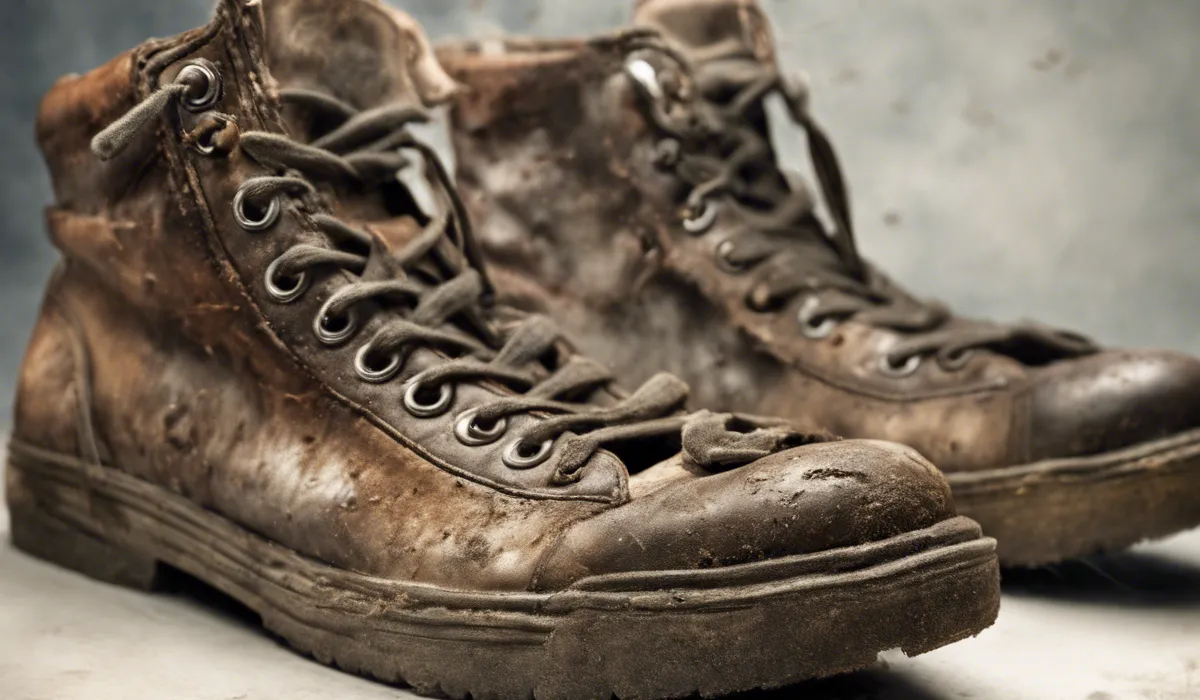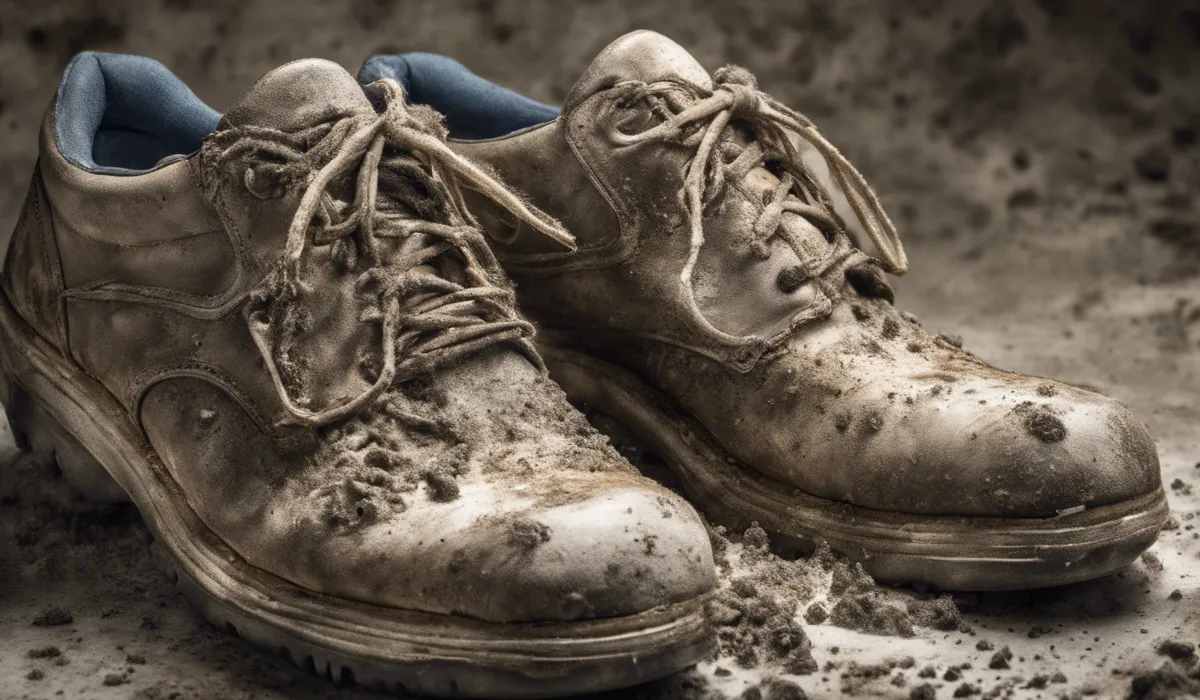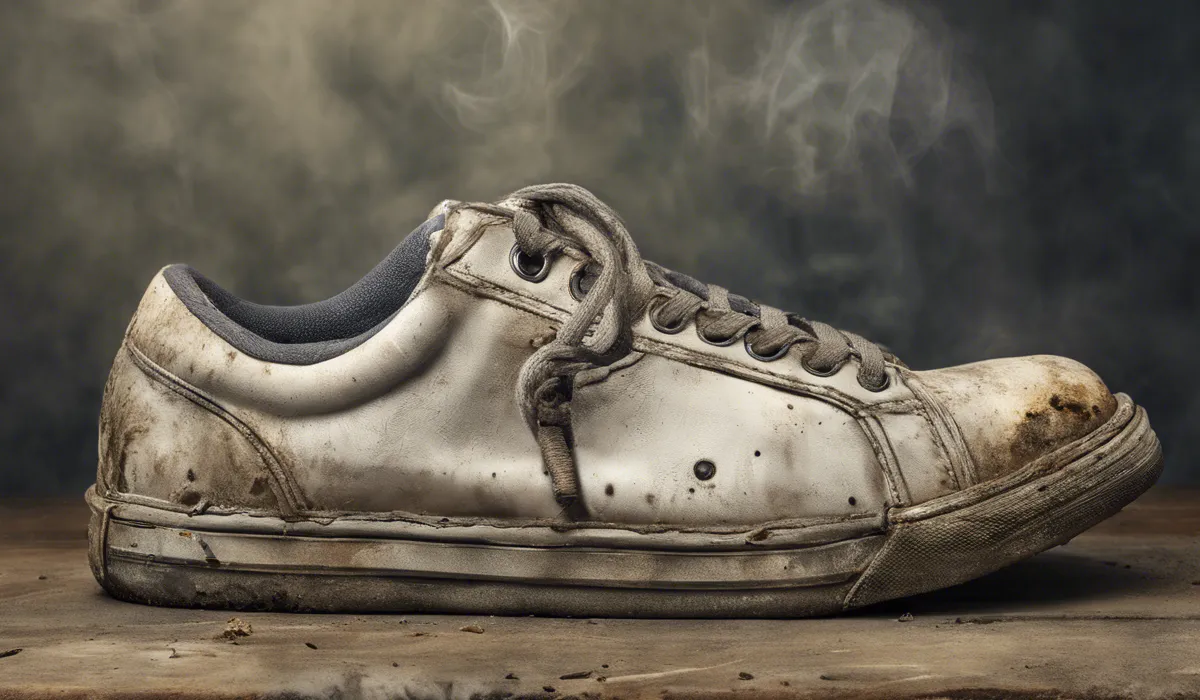Mold grows on shoes due to moisture, darkness, and poor ventilation. If your shoes are damp or stored in a humid environment, mold spores easily proliferate. Ensure shoes are dry before storage and keep them in a well-ventilated area to prevent mold growth.
Reasons for Mold Growth on Shoes

Understanding Mold’s Ideal Environment
Mold thrives in environments where moisture and warmth are abundant.
If shoes are kept in areas where the air is heavy with humidity, or if they are put away while still damp from sweat or external conditions, mold finds a perfect breeding ground.
This is especially true in places where temperatures are consistently warm, allowing mold spores to multiply rapidly.
The Consequences of Poor Ventilation
Shoes that are stored in closed-off areas, such as boxes or closets without proper airflow, are at risk of developing mold.
Dark and stuffy spaces allow moisture to linger, depriving shoes of the fresh air needed to keep them dry. Ensuring that your storage spaces have good air circulation is key to preventing mold growth.
Infrequent Usage and Air Circulation
Shoes that are seldom worn can also be susceptible to mold.
Without regular wearing, which naturally helps to aerate and dry out footwear, shoes can become stagnant and moist.
This lack of circulation creates an environment where mold can take hold.
Feeding the Fungus with Organic Materials
Many shoes are made from organic materials like leather or canvas, which mold can use as a food source.
When these materials are exposed to mold spores, which are virtually everywhere, they can easily become colonized, especially if they are damp or soiled.
Previous Encounters with Mold
Once shoes come into contact with mold spores, the risk of growth increases.
These spores can be introduced from various environments, such as walking through a moldy area or coming into contact with other mold-infested items.
The spores are tenacious and can cling to your shoes, waiting for the right conditions to grow.
Preventative Measures to Stop Mold Growth

Optimizing Shoe Storage
Properly storing your shoes is vital in preventing mold. Ensure that your storage area is dry and well-ventilated.
If necessary, use closet dehumidifiers to maintain an environment that discourages mold growth. Shoes should also be stored off the ground to allow air to circulate around them.
Embracing Regular Use and Rotation
Rotating your shoes and wearing them regularly can help prevent mold. This practice not only airs them out but also allows any lingering moisture to evaporate.
Establish a shoe rotation schedule to ensure that all your shoes get worn periodically.
Cleaning Rituals and Drying Practices
Cleaning your shoes after each use is an excellent habit. Remove any dirt or debris that could hold moisture and provide a food source for mold.
Allow shoes to air dry completely before storing them. If they get wet, dry them immediately, using newspaper or a shoe dryer if necessary.
Utilizing Desiccants and Moisture Absorbers
Desiccants like silica gel packets can be placed in shoe boxes to absorb excess moisture. Moisture-absorbing products, such as charcoal shoe deodorizers, not only keep your shoes smelling fresh but also help in maintaining a dry environment.
Controlling Humidity in Storage Areas
Maintaining low humidity levels in closets and storage spaces is crucial. Use a hygrometer to monitor the humidity level, aiming to keep it below 50%.
Consider using a dehumidifier in particularly damp areas to help control the moisture in the air.
Remediation Strategies for Moldy Shoes

Isolating and Assessing Moldy Footwear
When you discover mold on your shoes, immediately isolate them to prevent spores from spreading.
Assess the extent of the mold damage to determine if the shoes can be salvaged. Sometimes, if the mold has deeply penetrated the material, it may be best to discard the shoes.
Cleaning Techniques for Various Materials
Different shoe materials require different cleaning methods. For leather shoes, a mixture of water and alcohol can be effective in removing mold.
Canvas or fabric shoes might be cleaned with a gentle detergent and warm water. Always test a small area first to ensure the cleaning method does not damage the shoes.
Choosing Between Natural and Chemical Solutions
Natural solutions like vinegar or baking soda can be effective against mold and are less harsh on materials.
Chemical solutions, such as specialized mold removers, can be used for stubborn mold but should be applied with care to avoid damaging the shoes.
Professional Cleaning Services
If the mold problem on your shoes is severe, or if you’re dealing with delicate materials, it might be time to seek professional cleaning services.
Experts have the tools and techniques to remove mold without harming the shoes, ensuring that they are safely restored to their former glory.
Prevention Post-Treatment
After treating your shoes for mold, take steps to prevent a recurrence. Store shoes with cedar shoe trees to absorb moisture and maintain their shape.
Apply a protective spray that repels water and stains, and continue to monitor and control the humidity in your storage spaces.
FAQs About Mold on Shoes
Why is mold appearing on my shoes?
Mold grows on shoes because of moisture, darkness, and poor ventilation, creating an ideal environment for spores to proliferate.
How does moisture contribute to mold growth on shoes?
Moisture from dampness or humidity provides the necessary water for mold spores to thrive and grow on your shoes.
Can storing shoes in a dark place cause mold?
Yes, darkness can contribute to mold growth on shoes by creating a favorable environment for mold spores that prefer low light conditions.
Why does poor ventilation lead to mold on shoes?
Poor ventilation traps moisture and humidity around shoes, preventing them from drying properly and encouraging mold growth.
How can I prevent mold from growing on my shoes?
Prevent mold on shoes by ensuring they are completely dry before storage and keeping them in a well-ventilated area.
Final Thoughts
Mold on shoes is primarily due to the trifecta of moisture, darkness, and inadequate air circulation.
Damp footwear offers a fertile ground for mold spores, which thrive in humid, poorly ventilated spaces.
Drying shoes thoroughly and storing them in airy locations are essential steps to stave off mold infestations.
